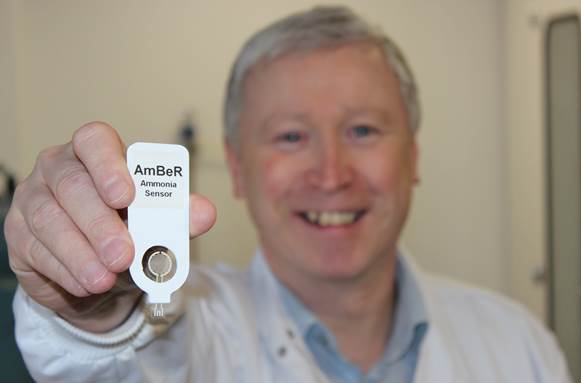The device, known as AmBeR, was developed by Prof Tony Killard from the University of the West of England (UWE Bristol). It came about while he was investigating new nanotechnology sensor materials. AmBeR uses polyaniline, an electricity-conducting polymer that Killard formed into nanoparticles. He discovered that this made the material extremely sensitive, and it could also be deposited in layers just thousandths of a millimetre thick using low-cost printing technology.

“That was kind of the eureka moment,” said Killard, head of biomedical sciences at UWE Bristol. “What we had was a cluster of new characteristics which allowed us to do new things we couldn’t do before. Before, this material [polyaniline] was just a laboratory curiosity to scientists and you would play around with this stuff.”
According to Killard, the device could have a significant impact for those who need to test regularly for ammonia levels. The technology will deliver pain-free testing with greater accuracy than many alternatives, while also allowing more frequent monitoring and ultimately even self-testing at home.
“No one has been able to do ammonia breath testing in a way which is accurate without using a large piece of equipment,” he said. “There are instruments in existence which can do it but they are not economically viable. The AmBeR device will be more like glucose testing strips where you use the sensor test strip once and throw it away when finished. We are trying to make this a game-changer commercially.”
A company called BreathDX has been set up in order to further develop the project and explore commercial opportunities. The device is currently in production and will undergo clinical studies in May. Killard claims the technology could eventually be used to measure trace breath gases for other diseases, including potentially diabetes.




Project to investigate hybrid approach to titanium manufacturing
What is this a hybrid of? Superplastic forming tends to be performed slowly as otherwise the behaviour is the hot creep that typifies hot...